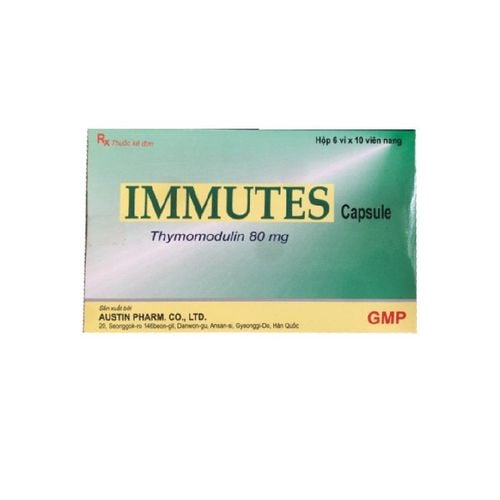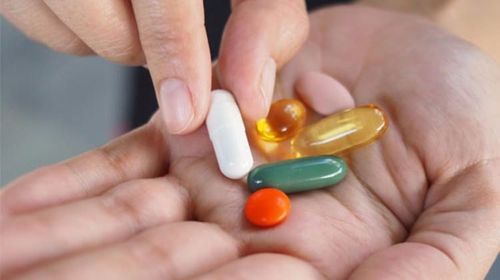This is an automatically translated article.
Food allergies are quite common and can be encountered frequently in life. This article will talk about tips for living with food allergies and the importance of food allergy prevention measures.1. What is a food allergy?
People with food allergies can have severe or even life-threatening reactions after consuming certain foods. The most important strategy in managing food allergies is to avoid these foods.However, it is not always easy to tell if packaged foods or restaurant dishes contain allergens. Therefore, it is important to know how to treat an allergic reaction if it occurs.
2. How to avoid food allergens?
People with food allergies are often asked to avoid that food completely. However, it is often difficult for you to do this in real life. Therefore, anyone with a food allergy should be prepared to treat an unwanted allergic reaction at any time and under any circumstances.In general, people with food allergies should absolutely avoid eating or drinking anything that contains small amounts of a food allergen. Often, it is not possible to know the amount of an allergen that will trigger an allergic reaction. Some people only react to a food they are allergic to if they drink alcohol, take nonsteroidal anti-inflammatory drugs (NSAIDS like aspirin or ibuprofen), or exercise right after eating that food. This can be controlled by avoiding "triggers" (eg, alcohol, drugs, or exercise) for a period of time, usually at least a few hours, after consuming the food. Some people with exercise-related reactions also need to avoid exercise before eating specific foods. If you think you may have any of these triggers, talk to your doctor.
In some cases, a person can safely eat food when it is cooked rather than in its raw form.
3. Eating, touching, and inhaling allergens
Most people with food allergies react after eating a food. Just touching food can lead to local skin reactions such as hives. However, this is not likely to cause serious reactions in most people with food allergies.Food with a smell is also unlikely to cause a serious reaction. For example, the smell of peanut butter is related to volatile organic compounds (VOCs). The smell of peanut butter is not related to peanut butter particles in the air, so it is unlikely to cause an allergic reaction.
However, inhalation of small food particles (by steaming, boiling, frying, shaving, shredding or grinding) can cause an allergic reaction in highly sensitive individuals. Therefore, very sensitive people should avoid situations where aerosolized food may be inhaled. Although peanut protein doesn't easily get into the air from peanut butter, it does come in peanut powder or "dust" roasted peanuts. Similarly, touching an allergenic food and then touching your eyes, nose, or mouth can cause an allergic reaction.
Some people can tolerate an allergen if it is cooked or baked. This is most commonly seen with milk/dairy, eggs, fruits and vegetables. Tolerance is usually determined through a controlled "food challenge," whereby patients are given gradually increased doses of grilled foods in a supervised medical setting. If you or your child have successfully overcome this challenge, these cooked and/or baked products should be included in the diet and consumed regularly.

Dị ứng thực phẩm thường thấy nhất là dị ứng với đậu phộng
4. Allergen Food Labeling Regulations
In the United States, the Food Allergy Labeling and Consumer Protection Act requires that nutrition labels on food packaging clearly identify eight specific food allergens (milk, eggs, fish, animals). shellfish, tree nuts, peanuts, wheat and soybeans). In addition, for tree nuts, crustaceans and fish, the specific type (e.g. walnuts or cashews, shrimp or lobster, tuna or salmon, etc.) labeling.This law applies to all packaged foods manufactured in the United States and also foods imported for sale in the United States. However, this law does not apply to packaged fresh meat, poultry or egg products. This update is available on the website of the Center for Food Safety and Applied Nutrition, a branch of the U.S. Food and Drug Administration.
Potential allergens other than the "top eight" listed above may still be listed on food labels with ambiguous names (e.g. Garlic or sesame may be listed as one type). spices, natural or even artificial flavors). If the label is not clear, call the manufacturer to clarify the ingredients.
Alcoholic beverages may also contain allergens. However, labeling laws do not currently apply to these beverages. People with food allergies should call the manufacturer with questions about ingredients.
Also, it's important to understand that "replacement" foods, used to remove fats or other ingredients from foods, may not remove allergenic proteins. For example, some egg substitutes (which are lower in cholesterol) still contain the protein in egg whites.
Shortages of certain food supplies are one of the consequences of the coronavirus pandemic 2019 (COVID-19). In May 2020, the US FDA issued a temporary policy change on food labeling, giving manufacturers flexibility to substitute ingredients during shortages. While the policy not to include major allergens has not been disclosed, it is possible that some of these substitutions could mean the introduction of ingredients that are not within the "top 8" labeling requirements.
The manufacturer may use certain phrases when a particular allergen is not an allergen but the ingredient may have come into contact with the allergenic ingredients during production process. For example, a blueberry muffin might not contain nuts but could be made in a bakery that contains allergenic nuts. Manufacturers may use phrases such as "may contain", "processed in a facility with...", "produced on equipment shared with...". Although there is no law to do this, it is the right thing to do.
Recommended labeling can help reduce the risk of an allergic reaction but can also significantly reduce food choices for people with food allergies.
5. Tips to avoid food allergies
Prepare meals at home Some families avoid bringing allergenic foods into the home if a person has allergies. Other families keep food indoors but take care to avoid cross-contact. Avoiding cross-contact requires thorough cleaning of cookware, cookware, glassware, containers, and other food preparation materials used for food allergens before It is used to prepare or serve other dishes.All family members, including children, must be careful if allergenic foods are brought into the home. For example, if a child uses a knife to make peanut butter sandwiches and jelly, the child could introduce peanut allergens into the jelly and then cause a reaction in the allergic sibling. react with peanuts when eating jelly.
Other tips for preparing meals at home include preparing food safely in advance, sealing food containers to prevent spills, and using separate food containers for people with allergies only.

Để tránh dị ứng thực phẩm bạn nên tự chuẩn bị đồ ăn tại nhà
Countertops and other surfaces can be cleaned with household cleaners or commercial wipes. Bar soap or water can remove peanut allergens from adult hands. This cleaning method may also be suitable for other allergens.
Travel and eat out Eating out can be challenging for people with food allergies. You can tell the chef what foods you are allergic to so they can prepare a safe meal for you. Avoid foods that you or the chef/waitress do not know contain allergens. You should also avoid eating food at fast food restaurants because there is a high chance of cross-allergic reactions.
Nuts are sometimes served on planes, increasing the risk of an allergic reaction. In addition, other travelers can also bring their own food on board. If you're traveling with young children with food allergies, clear tray tables and check seating areas for foods your child can find and eat. Some airlines offer food allergens (such as peanuts).
At Vinmec International General Hospital, there is a package of examination and advice on treatment of atopic dermatitis to help customers assess an overview of their allergic disease status, and advise on measures to help prevent recurrence. broadcast.
When registering for a package of examination and consultation for treatment of atopic dermatitis, customers will receive: Dermatology specialist examination. Perform tests such as: Quantification of IgE, fresh mycobacteria, specific IgE quantification with respiratory allergens - food (Panel 1 Viet), test Rida Allergy Screen (panel 1), ..
.
Please dial HOTLINE for more information or register for an appointment HERE. Download MyVinmec app to make appointments faster and to manage your bookings easily.
Reference article: update.com












